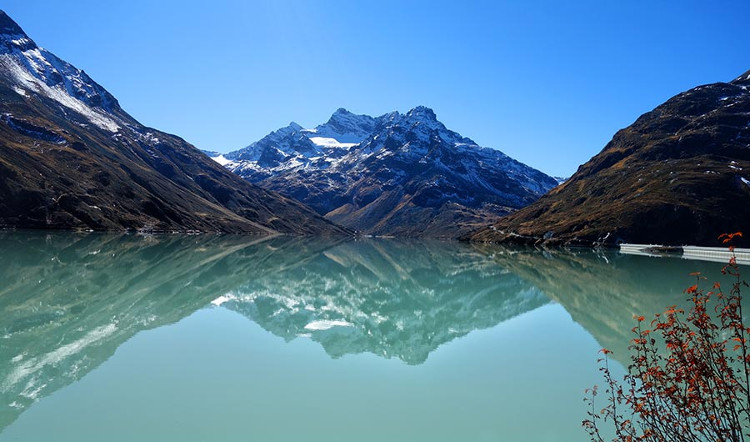Melting ice releases toxins from the 20th century
Despite its transparent appearance, thicker layers of ice will accumulate more pollutants in the surrounding environment.
Due to the situation, melting ice releases these substances and mixes with the water. People living near melting ice streams face the risk of poisoning from banned chemicals many years ago.
These chemicals are POPs-persistent organic pollutants. They cause many harms to humans and animals and take centuries to decompose.

Ice springs melt in the Alps, the Swiss border with Austria.(Photo: Shutterstock).
POPs also include polychlorinated biphenyls , which are widely used in the manufacture of electronics, plastics, and insecticides, which have been mass produced, until banned after the Stockholm Conference on (2004). .
Like water, POPs tend to evaporate and condense into the air when temperatures are low. Accordingly, they spread along the wind and condensed in cold places like icebergs and the highest density is the European Alps.
Scientists surveyed a two-mile iceberg called Silvretta in Switzerland. Math models and formulas are designed to assess the risk and predict the dependence of the surrounding people on the melting stream of ice. Chemical substances are independently analyzed and use the US Environmental Protection Agency's safety standards, including safe POP levels for people to drink and live.
However, the team found that the density of POP on salmon was 6,000 times greater than in the country - Earth and Climate scientist Kimberly Miner said. The Swiss Federal Bureau of Statistics recommends that people should not eat too much fish from local water sources, even if the average consumption also makes POP levels in the human body rise slightly above the safe level. .
Miner also suggested more specific and detailed studies, including direct measurement of POP levels in human blood.
- New period of instability of the earth's crust: Does it affect Vietnam?
- Turn over the most shocking murder case of the 20th century
- Science claims that there will be at least 187 million people lost their place at the end of the century
- The common cause of strong earthquakes in California in the early 20th century
- Georges Lemaitre - Great scientist of the 20th century to Einstein also admired
- The 10 most influential figures in the 20th century
- 21st century: Century of Nanotechnology
- 'Insane' beauty tools in the early 20th century
- The 5 most dangerous types of poison in the world
- Rare color images of Native Americans in the 19th and 20th centuries
- Winter Palace
- Simple signs that help identify your body are accumulating toxins
 Is the magnetic North Pole shift dangerous to humanity?
Is the magnetic North Pole shift dangerous to humanity? Washington legalizes the recycling of human bodies into fertilizer
Washington legalizes the recycling of human bodies into fertilizer Lightning stone - the mysterious guest
Lightning stone - the mysterious guest Stunned by the mysterious sunset, strange appearance
Stunned by the mysterious sunset, strange appearance